Annelids
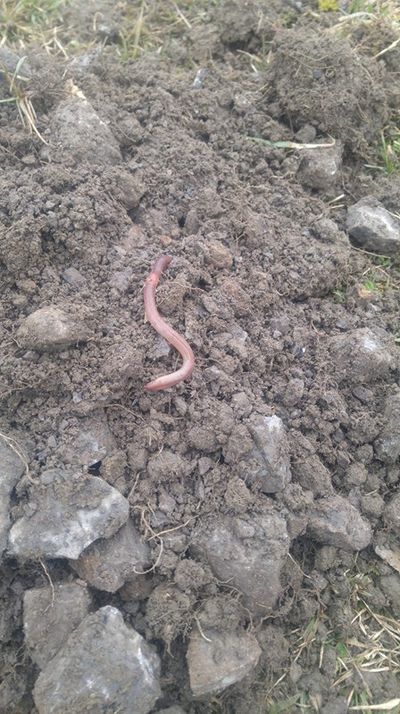
Annelids, or segmented worms, are segmented bilaterian invertebrates that are very important to a variety of marine and terrestrial environments. All annelids have a central body cavity called a coelom, bristles called setae, and segments called annulations which they are named after. There are three major groups of of annelids; the class Polychaeta which are almost entirely marine in nature and the subclasses of Oligochaeta which are earthworms and their relatives, and Hirudinea which are leeches. Among these groups there are approximately 17,000 described species. Many of the species of annelids reproduce sexually and are hermaphroditic, but some are able to asexually reproduce. Annelids are found across the entire planet in almost every kind of environment imaginable. Annelids are generally soft tissue organisms, but there is evidence of them in the fossil record dating back to the Ordovician period.
Classification
Annelids belong to the clade Lophotrochozoa. This clade includes the phyla Mollusca, Sipuncula, Brachiopodia, and Phorondia. [1] The two major groups of
annelids are the cilliates and polychaetes. Cilliates include members of the subclasses oligochaeta (eg. earthworms) and hirundinea (leeches). Oligochaetea are primarily terestrial, preferring damp soil, while leeches are mostly made up of freshwater aquatic species. Polychaetes are almost entirely made up of marine species, but a few freshwater species do exist.[1] There are abut 17,000 species of annelid and about 12,000 of them are members of polychaetes. Polychates are then divided into two groups dependent on if they are mostly mobile throughout life or if they live in tubes or burrows for the majority of their existence. There are also about 42 different groups of cilliates[2].
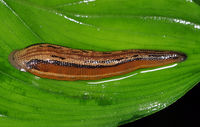
Distribution and Habitat
Annelids, due to their incredible diversity, live in nearly every habitat on planet, however they have no means of protecting themselves from desiccation, therefore they prefer to live in wet environments. These environments include oceanic sea floors, freshwater systems, and damp soil.[3] The class Polychaeta are primarily benthic organisms that can live in saline, brackish, or freshwater environments. Their distribution in these areas are primarily controlled by the space available to them, the dissolved oxygen content in the water, the rate of movement of the water, and the relative salinity and temperature of the water to the Polychaeta.[4] Oligochaetes are primarily found in the soil but a few are found in aquatic environments, and leeches are almost entirely aquatic or limited to humid areas.[3]
Morphology/Anatomy
Annelids are bilaterally symmetrical animals. The entire body of an annelid is composed of segments. They are named after the Latin word "anellus" which means little ring.[2] These segments can grow in number as the annelid grows in length, with exception of leeches which can have 34 segments and grow by expanding those 34 segments.[3] Annelids also have setae, or chaetae, which are long filaments or hooked structures made up up many chitinous cylinders held together by sclerotinized proteins.[2] These seatae are important in anchoring the annelids down and to help them move up surfaces.
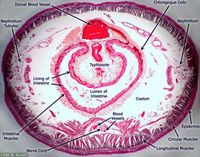
The digestive tract of an annelid is essentially one tube that runs from the mouth of the organism to the anus. The area between the inner cavity and the outside of the annelid is called the coelem. This area is filled with a coelemic fluid that also contains the other organ systems of the animals. This fluid is very important for a variety of functions of the organism such as locomotion, osmoregulation, and multiple metabolic processes among others. In polychaetes this fluid is also used to keep the worm's salt levels similar to the surrounding water. The coelmic fluids of leeches are filled with connective tissue and becomes more so as the leech ages. Oxygen is generally absorbed through the skin of the annelid and passed through the body by a closed circulatory system.[3]
Life Cycle and Reproduction
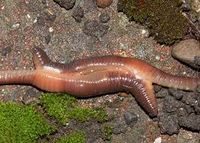
Many terrestrial annelids are hermaphroditic, while many polychaete have defined male and female sexes for spawning[2]. In oligochaetes the exchange of gametes go both ways with the sperm and eggs being exchanged between both partners. This is done in a head to tail position and then the eggs become enveloped in a mucus cocoon from the clitellum where the eggs are actually fertilized.[3] The eggs hatch and do not undergo a larval stage, they just hatch as small oligochates. Polychaete spawn near the surface marine environments. When they want to spawn they will swim to the surface and the females will release the eggs and the males will fertilize them.[5] The worms then undergo various stages of development under the protection of their mother until they are fully developed displaying a type of brooding behavior[5].
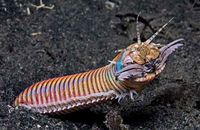
Role in Soil
Oligochaetes are the main annelids found in soil. Earthworms are a major member of oligochaetes and of which there are about 3500 members living in soil. Earthworms are considered ecosystem engineers because of the role they play in the structure of soils and the diversity of the soil ecosystem. Earthworms either get their food from the surface leaf litter or the organic residue found in soil.[6] The majority of organics that an earthworm will ingest are from dead plant matter, but they will also consume living animals such as nematodes and other microfauna.[6] Earthworms prefer foods with a high nitrogen content and they also eat to burrow as well. As they burrow they leave nutrient rich casts which are important for returning nutrients to the soil. This aerates the soil, provides more nutrient for living plants, and helps prevent erosion. These nutrient rich casts are a big reason why earthworms are important to agriculture and why they are sought out when planting an new field.[6]
References
1. Parry, L. , Tanner, A. , Vinther, J. and Smith, A. (2014), The origin of annelids. Palaeontology, 57: 1091-1103. doi:10.1111/pala.12129
2. Rouse, G. W. (2001). Annelida (Segmented Worms). In eLS, (Ed.). doi:10.1038/npg.els.0001599
3. Reish, D. J. (2013, December 18). Annelid. Retrieved April 12, 2018, from https://www.britannica.com/animal/annelid
4. Lardicci, C. , Abbiati, M. , Crema, R. , Morri, C. , Bianchi, C. N. and Castelli, A. (1993), The Distribution of Polychaetes Along Environmental Gradients: An Example from the Or betel I o Lagoon, Italy. Marine Ecology, 14: 35-52. doi:10.1111/j.1439-0485.1993.tb00363.x
5. Annie Mercier, Sandrine Baillon, Jean-François Hamel,Life history and seasonal breeding of the deep-sea annelid Ophryotrocha sp. (Polychaeta: Dorvelleidae),Deep Sea Research Part I: Oceanographic Research Papers,Volume 91,2014,Pages 27-35,ISSN 0967-0637,https://doi.org/10.1016/j.dsr.2014.05.007.
6. Lenardt, A. (2014, April 7). The Role of Earthworms in Soil Systems. Retrieved April 14, 2018, from https://blogs.unbc.ca/biol202/2014/04/07/the-role-of-earthworms-in-soil-systems/